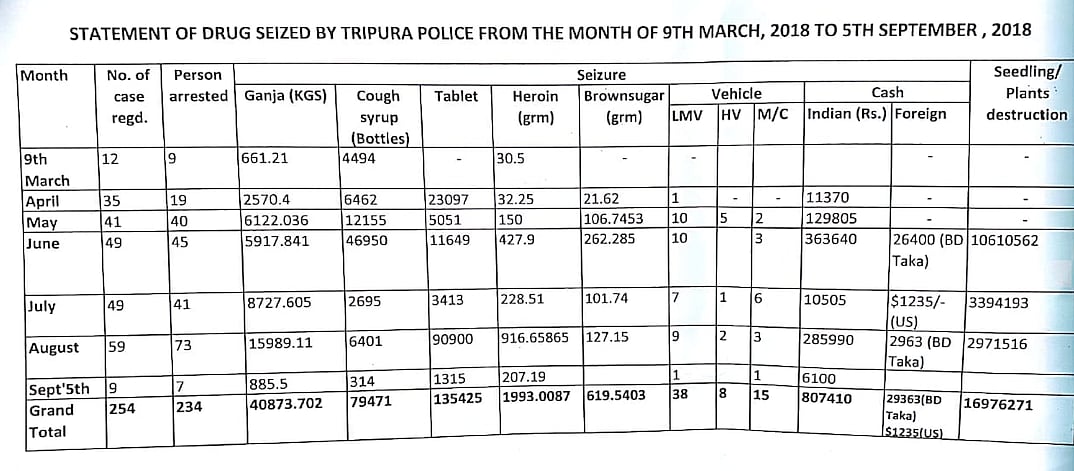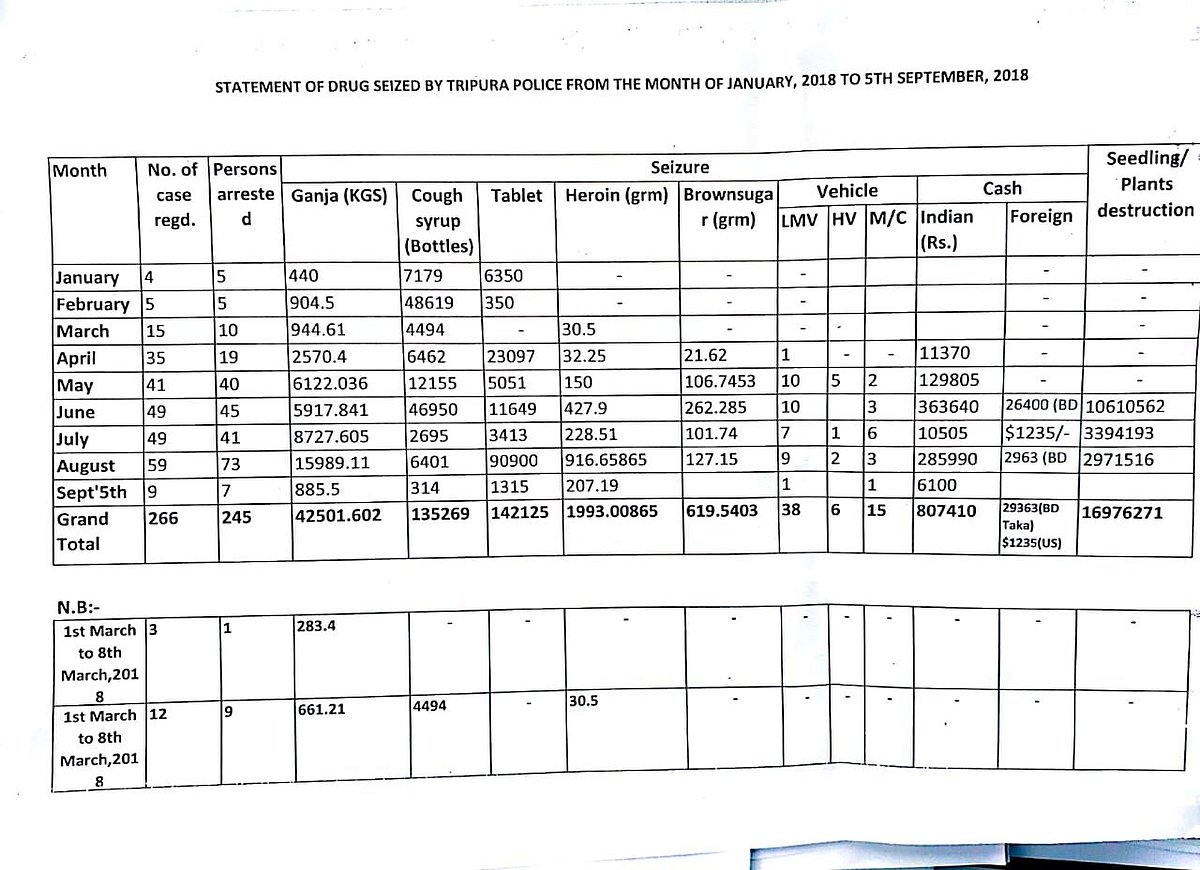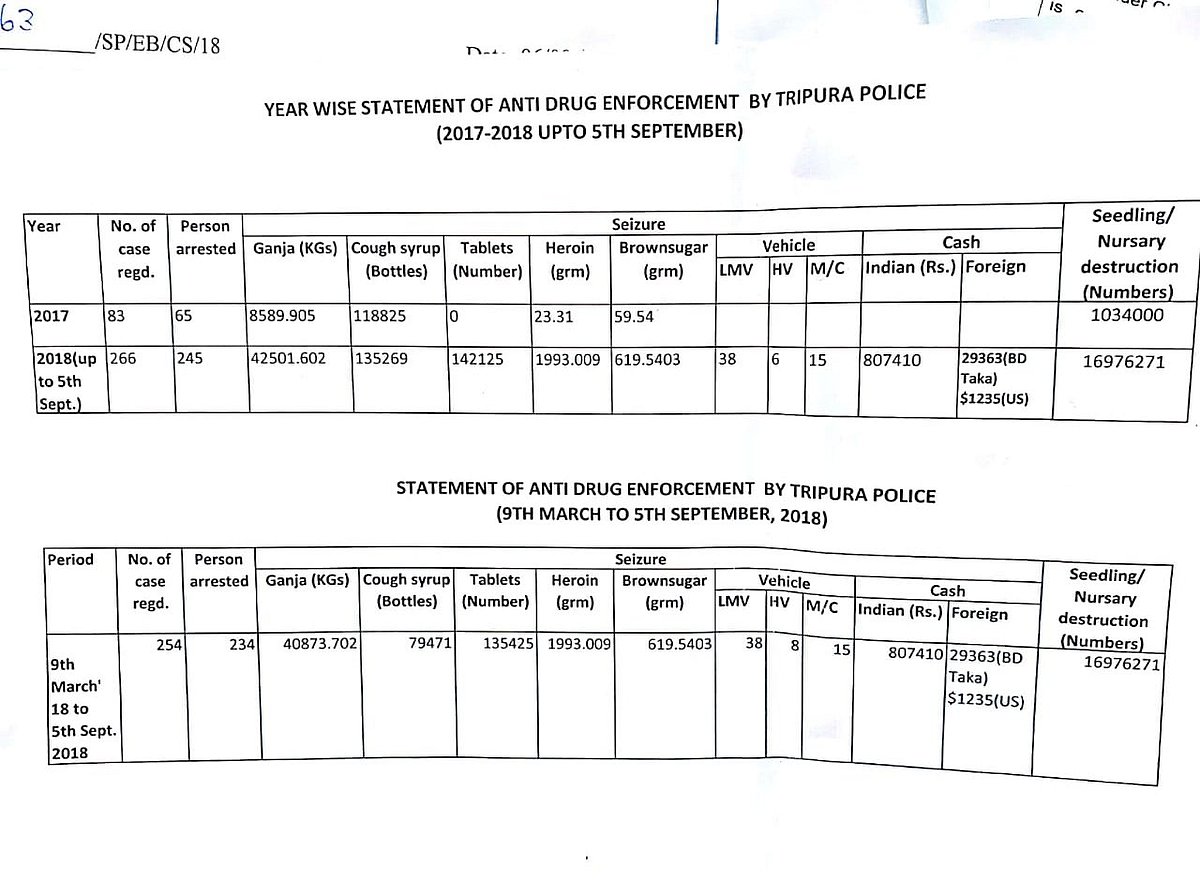Journalists caught in crossfire amid crackdown on drug trafficking in Tripura
At least five journalists were injured in recent attacks as a consequence of their reporting.
The 11-month-old Tripura government seems serious about curtailing the free movement of narcotics through the state. Recent narcotic hauls and arrests of peddlers, including complicit police officials, are some of the steps being taken by Chief Minister Biplab Kumar Deb-led government to follow up on one of his party’s pre-election pledges—to create a drug-free state.
Since June last year, five personnel of the Tripura police have been arrested and six others suspended from service under the narcotics control operation. Inquiries have been ordered against a few others, and more personnel are expected to be exposed, as the investigation progresses.
This campaign against drug trade in Tripura, however, has put journalists covering the subject on the radar of the mafia and the security forces.
At least five journalists were injured in recent attacks at Dharmanagar, Pecharthal, Sonamura, Belonia and Khowai subdivisions as a consequence of their reporting on drug trafficking. Aggrieved journalists claim that they did not get any support from police officers they approached.
Assam Rifles under lens
The attack on Sadek Mia, a journalist working for a TV news channel in Sonamura subdivision, on January 27, has exposed the alleged involvement of some members of Assam Rifles. According to Mia, he was abducted and roughed up by Assam Rifles personnel for his reporting on drug trafficking. The Sonamura subdivision is infamous for being a drug trafficking node and is frequented by vehicles belonging to Assam Rifles—despite being beyond their operational jurisdiction.
“I went to the border area after receiving information about suspicious movement of a vehicle without a number plate. All of a sudden some people dressed in security uniforms pushed me in a vehicle, and I was beaten up,” reads the complaint filed by Mia at a local police station. A severely injured Mia was thrown out of the running vehicle after being warned of dire consequences.
Police officials are maintaining silence on the identity of the personnel involved in this attack citing confidentiality of the investigation.
Ashish Chakraborty, a journalist from Khowai, was provided with police protection after he received threats from a few police officers and the drug mafia. The day that Mia was attacked in Sonamura, miscreants barged into Chakraborty’s home, manhandled him and threatened him to stop writing against drug smuggling, the Khowai journalist claims. Chakraborty, who reports for an Agartala-based vernacular daily Dainik Sambad, had recently covered the arrest of an Agartala-based mafia don in a drug trafficking case. The don’s henchmen are reported to be threatening him.
“It’s a triangular nexus between police, Border Security Force and Assam Rifles to smuggle drug substances in and out of some areas. They are responsible for assaults of journalists,” Debashish Majumder, general secretary of Tripura Working Journalists Association, alleges.
Journalists’ Union leader Pintu Lal Dey believes that these incidents should not be seen as isolated cases. He says the motive behind these attacks is to create fear in the minds of journalists and to keep them from reporting on drug-related issues.
Press freedom and increasing hostility
Tripura has not been a friendly state for journalists, who face repercussions for reporting on issues such as corruption and crime. Murder of two journalists, Shantanu Bhowmik and Sudip Datta Bhowmik, in a span of two months in 2017, shook the media fraternity in the state.
“Unlike previous regimes, our government has ensured press freedom and is doing the best to support the journalists. Announcement of a pension scheme for veteran journalists worth Rs 10,000 a month is a major decision of the government,” says BJP spokesperson Nabendu Bhattacharjee. Attacks on journalists have continued despite the state government’s claims of a reformed approach towards press freedom.
Subal Kumar Dey, editor of Syandan Patrika, a popular vernacular daily, expressed concern over repeated incidents of assault and intimidation against journalists, particularly in rural areas. Dey, also president of the Agartala Press Club, says they had organised protests after Shantanu and Sudip were murdered and will continue to seek protection for all journalists.
Long, porous border
Tripura shares a 856-km-long international border with Bangladesh on the north, south and west side. Among the items smuggled through Tripura, cannabis is among the most popular one. It is traded illegally to Bangladesh and several Indian states. Locally attributed as a cash crop, cannabis has overshadowed the market for Phensedyl in Bangladesh. The latter is a cough syrup popular among Muslim youth who shun alcohol on religious grounds. However, recent hauls of Brown Sugar and tablets such as Yaba in the state have alarmed security officials.
Despite the construction of a barbed wire fence along most of the 856-km boundary with Bangladesh and presence of watchtowers, night vision devices and other surveillance gadgets, smuggling of contraband continues unabated.
Between March 9, 2018, when the new government took charge, and September 5, 2018, the Tripura police have arrested 234 people and registered 254 cases related to drug peddling. They have also seized 40,873 kg of cannabis, 79,471 bottles of cough syrups, 1,35,425 tablets, 1,993.009 gm of heroin and 619.54 gm of smack.


In 2017, a total of 65 persons were arrested and 83 cases were registered in drug-related crimes. The confiscated narcotic substances were also marginal, except for cough syrup bottles: 8,589 kg cannabis, 1,18,825 bottles of cough syrup, 23.31 gm heroin, 59.54 gm smack. No tablets were seized in 2017.

The Tripura police seem determined to free the state of its drug menace. “We have two goals to achieve–first, to check smuggling both ways and second, to free Tripura from drug addiction,” says a senior police officer who wished to remain anonymous.
(Author is an Agartala-based freelance writer and a member of 101Reporters.com, a pan-India network of grassroots reporters.)
